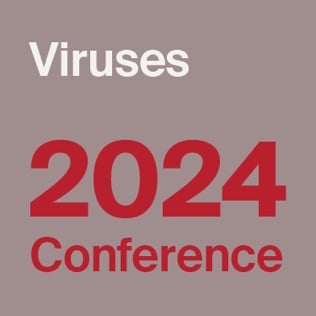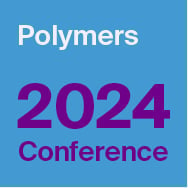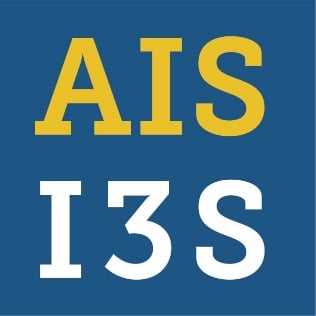
Journal Menu
► ▼ Journal Menu-
- Materials Home
- Aims & Scope
- Editorial Board
- Reviewer Board
- Topical Advisory Panel
- Instructions for Authors
- Special Issues
- Topics
- Sections & Collections
- Article Processing Charge
- Indexing & Archiving
- Editor’s Choice Articles
- Most Cited & Viewed
- Journal Statistics
- Journal History
- Journal Awards
- Society Collaborations
- Conferences
- Editorial Office
Journal Browser
► ▼ Journal BrowserNeed Help?
Announcements
2 January 2024
MDPI Insights: The CEO's Letter #7 - Nobel Laureates Entrust MDPI with Their Research

Welcome to the MDPI Insights: The CEO's Letter.
In these monthly letters, I will showcase two key aspects of our work at MDPI: our commitment to empowering researchers and our determination to facilitating open scientific exchange.
Opening Thoughts
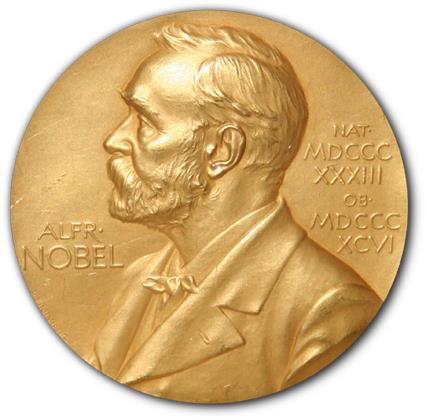
Nobel Prize Laureates Entrust MDPI with Their Research
The Nobel Prize stands as a hallmark of distinction, honouring ground-breaking research across disciplines. Annually, the Nobel Prizes are awarded in six categories: Physics, Chemistry, Medicine or Physiology, Literature, Peace, and Economic Sciences.
Through the years, renowned scholars have entrusted MDPI with their work. As at December 2023, 26 Nobel laureates have contributed to more than 75 articles across 25 MDPI journals, including: Antibiotics, Applied Sciences, Biology, Biomedicines, Cancers, Catalysts, Cells, Crystals, Entropy, Games, IJMS, Life, Materials, Micromachines, Molecules, Pharmaceuticals, Pharmaceutics, Photonics, Quantum Beam Science, Remote Sensing, Sensors, Solids, Universe, Vaccines, and Viruses.
The best of the best trust us with their work.
Nobel Prize Laureates Who Have Published with MDPI
We are proud to list the names of Pierre Agostini, Hiroshi Amano, Werner Arber, Aaron Ciechanover, Robert H. Grubbs, Oliver Hart, Gerard ‘t Hooft, Michael Houghton, Harald zur Hausen, Katalin Karikó, Jean-Marie Lehn, Gérard Mourou, Ferid Murad, Shuji Nakamura, William Nordhaus, Kostya S. Novoselov, Giorgio Parisi, Charles M. Rice, Alvin E. Roth, Donna Strickland, K. Barry Sharpless, George F. Smoot, Anne L’Huillier, Drew Weissman, Kurt Wüthrich, Ada Yonath.
The privilege of hosting such contributors resonates deeply with our editorial teams. For instance, in this interview, the Editor-in-Chief (EiC) of Universe speaks on the significance of publishing a paper by Nobel laureate Gerard ’t Hooft within the journal.
2023 Nobel Prize Winners Published by MDPI
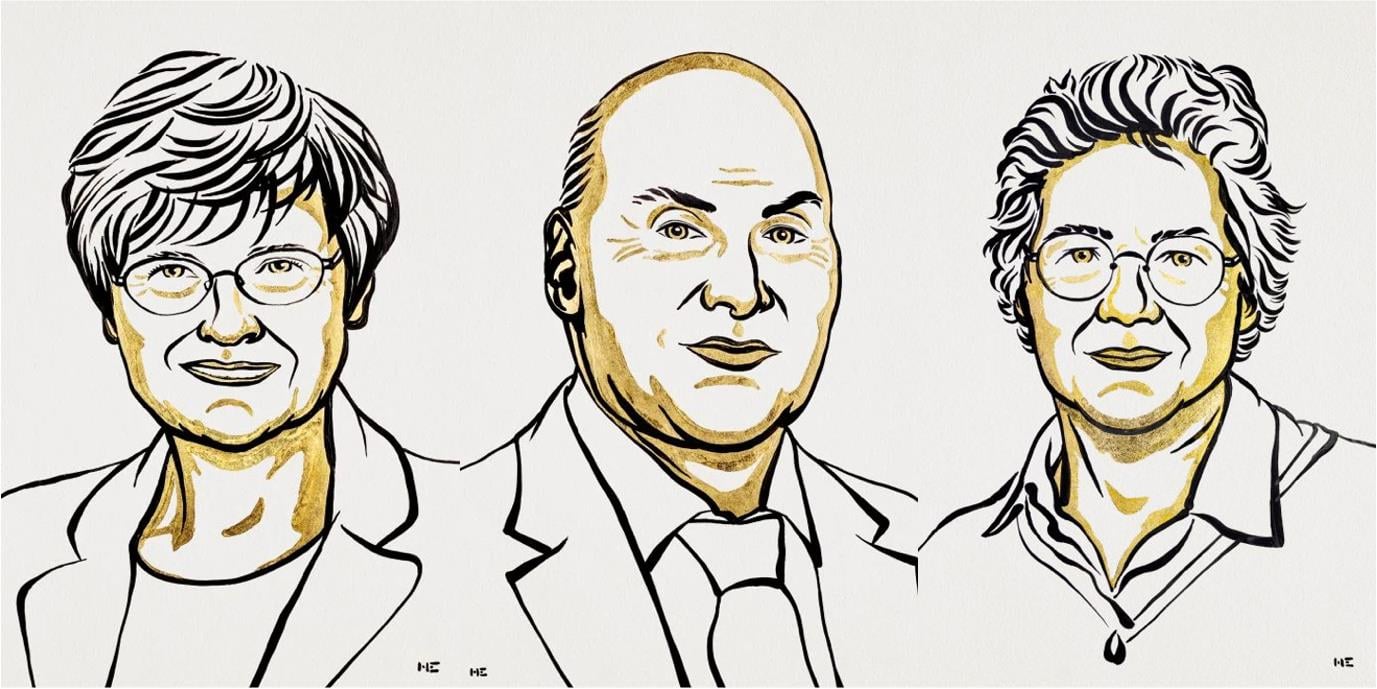
Nobel Prize Winners, 2023: Katalin Karikó, Drew Weissman, Anne L’Huillier (Ill. Niklas Elmehed © Nobel Prize Outreach)
Three laureates from the 2023 Nobel Prize cohort have trusted MDPI as their publishing platform. Notably, in a 2022 Pharmaceutics paper, molecular biologist Katalin Karikó and her team presented a methodology for evaluating mRNA capping efficiency, pivotal for therapeutic applications. Pharmaceutics had previously dedicated a Special Issue to “mRNA Therapeutics: A Themed Issue in Honor of Professor Katalin Karikó”, spotlighting ten articles from August 2021 to February 2022.
In the journal Vaccines, Professor Drew Weissman, collaborating with scholars from Pennsylvania University and George Mason University, contributed an influential review titled “Nanomaterial Delivery Systems for mRNA Vaccines”. His collaborative efforts spanned five papers across MDPI journals between 2021 and 2023.
Furthermore, Anne L'Huillier of Lund University, only the fifth female recipient of the Physics Prize, co-authored an article in Applied Sciences focusing on "Advanced EUV and X-Ray Optics". Similarly, Pierre Agostini, an Emeritus Professor from Ohio State University, co-authored an article featured in the special issue "Attosecond Science and Technology: Principles and Applications".
We extend heartfelt congratulations to all Nobel Prize laureates and express sincere gratitude for their confidence in MDPI as a platform for their scholarly contributions.
Read more:
Impactful Research

MDPI Journals Newly Indexed in 2023
The aim of indexing is to enhance the quality and credibility of published research, ensuring that researchers access the most credible resources available. While the principle behind citation indexing is straightforward, it remains one of the most dependable methods for tracking an idea's evolution across various scientific disciplines.
Throughout the year, MDPI works to expand the reach of our publications across premier multidisciplinary databases like Web of Science, Scopus, EBSCO, and ProQuest. This initiative is spearheaded by MDPI's Indexing team, under the leadership of Dr. Constanze Schelhorn.
In 2023, MDPI achieved 54 new acceptances in Scopus, 29 in Web of Science, 52 in EBSCO, and 83 in DOAJ: Directory of Open Access Journals.
The team prioritizes ensuring that our journals feature in numerous specialized databases, including PMC, PubMed, MEDLINE, Inspec, CAS, and FSTA, among others. Currently, MDPI collaborates with over 65 renowned international databases, consistently enhancing our database affiliations annually.
MDPI’s journals are indexed in all major global databases.
Furthermore, we collaborate with universities and government organizations to list our journals in country-specific ranking lists and relevant institutional repositories. This ensures compliance with requirements often set by funders or institutions for authors to publish in specific journals.
Web of Science Adds 24 MDPI Journals to Emerging Sources Citation Index (ESCI)
Clarivate recently analysed MDPI’s new journals, resulting in 24 journals, mainly established in 2020, being added to the ESCI in November and December 2023. Additionally, five journals passed this assessment earlier in the year. For a complete list of our journals in Web of Science, refer here. Journals in the ESCI meet 24 quality criteria, ensuring editorial rigor. They may be considered for inclusion in broader indices like the Science Citation Index Expanded (SCIE), the Social Sciences Citation Index (SSCI), or the Arts and Humanities Citation Index (AHCI), based on four impact criteria.
Read more:
Inside MDPI

MDPI Appoints New Chief Operating Officer (COO)

Alistair Freeland returned to MDPI and assumed the role of Chief Operating Officer in November 2023, a position he previously held from 2013 to 2019. He succeeds Dr. Yu Lin, who will remain a member of MDPI’s Board of Directors, overseeing significant financial decisions for the company. I would like to express my sincere thanks to Dr. Yu Lin for his service as COO.
Alistair brings extensive experience not only in scholarly publishing but also in technology and business management. Prior to rejoining MDPI, he was associated with SIX Group, the entity responsible for Switzerland's financial market infrastructure. There, he played a pivotal role in developing the blockchain-based platform SDX (SIX Digital Exchange), which has gained traction among major Swiss banks and the Swiss National Bank.
As COO, Alistair will collaborate with the MDPI management team to improve the practices and services we offer to scholarly communities. I am pleased to welcome Alistair back to MDPI and look forward to his contributions going forward.
Coming Together for Science

MDPI’s 2024 In-Person Academic Events Schedule
MDPI's Conference Team is dedicated to organizing and hosting in-person academic events across Europe, Asia-Pacific, and North America. We recognize conferences as invaluable platforms for scientific collaboration, scholarly exchange, discussions on contemporary topics, networking, and forging collaborations.
Here's a glimpse of the notable events we currently have scheduled for 2024:
|
|
14–16 February, 2024 |
|
|
24–26 April, 2024 |
|
|
28–31 May, 2024 |
|
|
1–4 August, 2024 |
Upcoming events with details to be announced:
- September 2024, Materials 2024 – Basel, Switzerland
- 19–21 September 2024, International Conference on Nanomaterials Sciences 2024 – Beijing, China
- October 2024, ncRNA 2024 – Basel, Switzerland
- November 2024, Pharmaceuticals 2024 – Barcelona, Spain
- 22–26 November 2024, International Conference on Science of Electronics – Wuhan, China
- Stay tuned for more details on the Sustainable Publishing Forum 2024.
Click here for all upcoming MDPI events.
Organize Your Event with MDPI’s Sciforum
Sciforum is MDPI’s platform dedicated to the organization of scientific events. In line with our mission to promote science, Sciforum supports scholars, societies, research networks, and universities at all stages of organizing in-person events, virtual events and webinars. Our platforms are efficient, user-friendly, and cost-effective. We handle all steps related to event management. Contact us for details.
Closing Thoughts

Reflecting on 2023 and Looking Ahead to 2024
As we approach 2024, I reflect on the incredible journey we’ve had together at MDPI this year. The past 12 months have been marked by ambitious projects and initiatives to improve our internal processes, and a commitment to continue delivering top-notch services to our stakeholders. I’d like to thank each and every one of our staff members for contributing to the positive experiences our stakeholders have reported in our surveys. Your dedication to speed, efficiency, and effective communication with our stakeholders is very much recognized and appreciated.
Becoming a stronger organisation
While we have encountered challenges in 2023, it’s important to understand that these are a part of our growth process. Difficulties provide us with opportunities to reflect, address problems at their roots, and ultimately evolve into a stronger organization. Our stakeholders expect us to overcome tough times, and it’s an expectation that we have for ourselves.
I extend my sincere appreciation to every MDPI employee, from our editorial office and IT department to marketing, indexing, IOAP, societies, Scientific Office board, products, production, conferences, finance, operations, admin, and beyond. To our newest team members, a warm welcome; to our longstanding colleagues, your dedication is invaluable.
“I am committed to taking MDPI to a new level of excellence.”
Interacting with many of you during my visits to our offices and representing MDPI at external events has been a personal highlight. I am deeply grateful to Dr. Lin for entrusting me with the role of CEO of MDPI. Looking forward, I am committed to working closely with our management team to lead MDPI and take it to a new level of excellence, aiming to establish it as the most trusted publisher in open access worldwide. This is a collective endeavour, with each of us shaping MDPI’s reputation. I therefore encourage us to take pride in our work, as it represents not only our craft but also MDPI as a whole.
Accountability and communication
As we look forward to 2024, there’s a lot to be excited about. Together, we’ll navigate challenges, seize growth opportunities, and refine our practices. To solidify MDPI’s position as the premier open access publisher globally, we must bolster accountability, improve stakeholder communication, share MDPI’s best practices, champion the open access philosophy, and educate stakeholders about our mission, methodologies, and motivations.
Thank you for engaging with the CEO Letter over the past six months of 2023. I will continue to release this newsletter as a method of sharing the great work being done at MDPI. Please feel free to connect directly with any insights or questions.
Here’s to a joyous and prosperous 2024!
Chief Executive Officer
MDPI AG
31 December 2023
Materials | Top 10 Cited Papers in 2022 in the Section “Metals and Alloys”

We are pleased to invite you to read the top 10 cited papers from 2022 in Materials (ISSN: 1996-1944) in the Section “Metals and Alloys”. The paper list is as follows:
1. “Magnesium-Based Alloys Used in Orthopedic Surgery”
by Iulian Antoniac, Marian Miculescu, Veronica Mănescu (Păltânea), Alexandru Stere, Pham Hong Quan, Gheorghe Păltânea, Alina Robu and Kamel Earar
Materials 2022, 15(3),1148; https://doi.org/10.3390/ma15031148
Available online: https://www.mdpi.com/1996-1944/15/3/1148
2. “Modeling Dynamic Recrystallization Behavior in a Novel HIPed P/M Superalloy during High-Temperature Deformation”
by Qiu-Mei Yang, Yong-Cheng Lin, Ming-Song Chen and Zi-Jian Chen
Materials 2022, 15(11), 4030; https://doi.org/10.3390/ma15114030
Available online: https://www.mdpi.com/1996-1944/15/11/4030
3. “Effect of SiC Nanoparticles on AZ31 Magnesium Alloy”
by Murugan Subramani, Song-Jeng Huang and Konstantin Borodianskiy
Materials 2022, 15(3), 1004; https://doi.org/10.3390/ma15031004
Available online: https://www.mdpi.com/1996-1944/15/3/1004
4. “Materials Engineering for Flexible Metallic Thin Film Applications”
by Megan J. Cordill, Patrice Kreiml and Christian Mitterer
Materials 2022, 15(3), 926; https://doi.org/10.3390/ma15030926
Available online: https://www.mdpi.com/1996-1944/15/3/926
5. “Electrochemical and In Vitro Biological Evaluation of Bio-Active Coatings Deposited by Magnetron Sputtering onto Biocompatible Mg-0.8Ca Alloy”
by Ana-Iulia Bița, Iulian Antoniac, Marian Miculescu, George E. Stan, Lucia Leonat, Aurora Antoniac, Bujor Constantin and Norin Forna
Materials 2022, 15(9), 3100; https://doi.org/10.3390/ma15093100
Available online: https://www.mdpi.com/1996-1944/15/9/3100
6. “Fluoride Treatment and In Vitro Corrosion Behavior of Mg-Nd-Y-Zn-Zr Alloys Type”
by Pham Hong Quan, Iulian Antoniac, Florin Miculescu, Aurora Antoniac, Veronica Manescu (Păltânea), Alina Robu, Ana-Iulia Bița, Marian Miculescu, Adriana Saceleanu, Alin Dănuț Bodog et al.
Materials 2022, 15(2), 566; https://doi.org/10.3390/ma15020566
Available online: https://www.mdpi.com/1996-1944/15/2/566
7. “Designing for Shape Memory in Additive Manufacturing of Cu–Al–Ni Shape Memory Alloy Processed by Laser Powder Bed Fusion”
by Mikel Pérez-Cerrato, Itziar Fraile, José Fernando Gómez-Cortés, Ernesto Urionabarrenetxea, Isabel Ruiz-Larrea, Iban González, María Luisa Nó, Nerea Burgos and Jose M. San Juan
Materials 2022, 15(18), 6284; https://doi.org/10.3390/ma15186284
Available online: https://www.mdpi.com/1996-1944/15/18/6284
8. “Microstructural Characterization of Additively Manufactured Metal Components Using Linear and Nonlinear Ultrasonic Techniques”
by Seong-Hyun Park, Sungho Choi, Dong-Gi Song and Kyung-Young Jhang
Materials 2022, 15(11),3876; https://doi.org/10.3390/ma15113876
Available online: https://www.mdpi.com/1996-1944/15/11/3876
9. “Hot Isostatic Pressing for Fatigue Critical Additively Manufactured Ti-6Al-4V”
by Terrence P. Moran, Patricio E. Carrion, Seungjong Lee, Nima Shamsaei, Nam Phan and Derek H. Warner
Materials 2022, 15(6), 2051; https://doi.org/10.3390/ma15062051
Available online: https://www.mdpi.com/1996-1944/15/6/2051
10. “Effects of Shot Peening and Cavitation Peening on Properties of Surface Layer of Metallic Materials—A Short Review”
by Aleksander Świetlicki, Mirosław Szala and Mariusz Walczak
Materials 2022, 15(7), 2476; https://doi.org/10.3390/ma15072476
Available online: https://www.mdpi.com/1996-1944/15/7/2476
25 December 2023
Materials | Top 10 Cited Papers in 2022 in the Section “Materials Chemistry”

We are pleased to invite you to read the top 10 cited papers in 2022 in Materials (ISSN: 1996-1944) in the Section “Materials Chemistry”. The paper list is as follows:
1. “The Use of Chitosan and Starch-Based Flocculants for Filter Backwash Water Treatment”
by Piotr Maćczak, Halina Kaczmarek, Marta Ziegler-Borowska, Katarzyna Węgrzynowska-Drzymalska and Aleksandra Burkowska-But
Materials 2022, 15(3), 1056; https://doi.org/10.3390/ma15031056
Available online: https://www.mdpi.com/1996-1944/15/3/1056
2. “Fabrication of PLA/PCL/Graphene Nanoplatelet (GNP) Electrically Conductive Circuit Using the Fused Filament Fabrication (FFF) 3D Printing Technique”
by Nour-Alhoda Masarra, Marcos Batistella, Jean-Christophe Quantin, Arnaud Regazzi, Monica Francesca Pucci, Roland El Hage and José-Marie Lopez-Cuesta
Materials 2022, 15(3), 762; https://doi.org/10.3390/ma15030762
Available online: https://www.mdpi.com/1996-1944/15/3/762
3. “Impact of Gamma Irradiation on the Properties of Magnesium-Doped Hydroxyapatite in Chitosan Matrix”
by Daniela Predoi, Carmen Steluta Ciobanu, Simona Liliana Iconaru, Silviu Adrian Predoi, Mariana Carmen Chifiriuc, Steinar Raaen, Monica Luminita Badea and Krzysztof Rokosz
Materials 2022, 15(15), 5372; https://doi.org/10.3390/ma15155372
Available online: https://www.mdpi.com/1996-1944/15/15/5372
4. “Synthesis of Hydroxyapatite/Iron Oxide Composite and Comparison of Selected Structural, Surface, and Electrochemical Properties”
by Adrianna Biedrzycka, Ewa Skwarek, Dariusz Osypiuk and Beata Cristóvao
Materials 2022, 15(3), 1139; https://doi.org/10.3390/ma15031139
Available online: https://www.mdpi.com/1996-1944/15/3/1139
5. “Impact of Mechanical Stress and Nitrogen Doping on the Defect Distribution in the Initial Stage of the 4H-SiC PVT Growth Process”
by Johannes Steiner and Peter J. Wellmann
Materials 2022, 15(5), 1897; https://doi.org/10.3390/ma15051897
Available online: https://www.mdpi.com/1996-1944/15/5/1897
6. “Recent Advances in Materials for Wearable Thermoelectric Generators and Biosensing Devices”
by Maria Sattar and Woon-Hong Yeo
Materials 2022, 15(12), 4315; https://doi.org/10.3390/ma15124315
Available online: https://www.mdpi.com/1996-1944/15/12/4315
7. “Influence of Silicone Additives on the Properties of Pressure-Sensitive Adhesives”
by Karolina Mozelewska and Adrian Krzysztof Antosik
Materials 2022, 15(16), 5713; https://doi.org/10.3390/ma15165713
Available online: https://www.mdpi.com/1996-1944/15/16/5713
8. “Fabrication, Characterization and Evaluation of an Alginate–Lignin Composite for Rare-Earth Elements Recovery”
by Dominika Fila, Zbigniew Hubicki and Dorota Kołodyńska
Materials 2022, 15(3), 944; https://doi.org/10.3390/ma15030944
Available online: https://www.mdpi.com/1996-1944/15/3/944
9. “Visible-Light-Driven AO7 Photocatalytic Degradation and Toxicity Removal at Bi-Doped SrTiO3”
by Maria João Nunes, Ana Lopes, Maria José Pacheco and Lurdes Ciríaco
Materials 2022, 15(7), 2465; https://doi.org/10.3390/ma15072465
Available online: https://www.mdpi.com/1996-1944/15/7/2465
10. “Effect of Electrode Modification with Chitosan and Nafion® on the Efficiency of Real-Time Enzyme Glucose Biosensors Based on ZnO Tetrapods”
by Valerii Myndrul, Igor Iatsunskyi, Nataliya Babayevska, Marcin Jarek and Teofil Jesionowski
Materials 2022, 15(13), 4672; https://doi.org/10.3390/ma15134672
Available online: https://www.mdpi.com/1996-1944/15/13/4672
25 December 2023
Materials | Highly Cited Special Issues in Materials in 2022

We are pleased to invite you to read the highly cited Special Issues in 2022 in Materials (ISSN: 1996-1944). We hope that this announcement will provide useful information for this field.
The highly cited Special Issues list is as follows:
 “Advances in Eco-Friendly Adsorbent Materials for Removal of Inorganic and Organic Pollutants” Edited by Dr. Katarzyna Szewczuk-Karpisz Views: 23,387 + | Cited by 110+ |
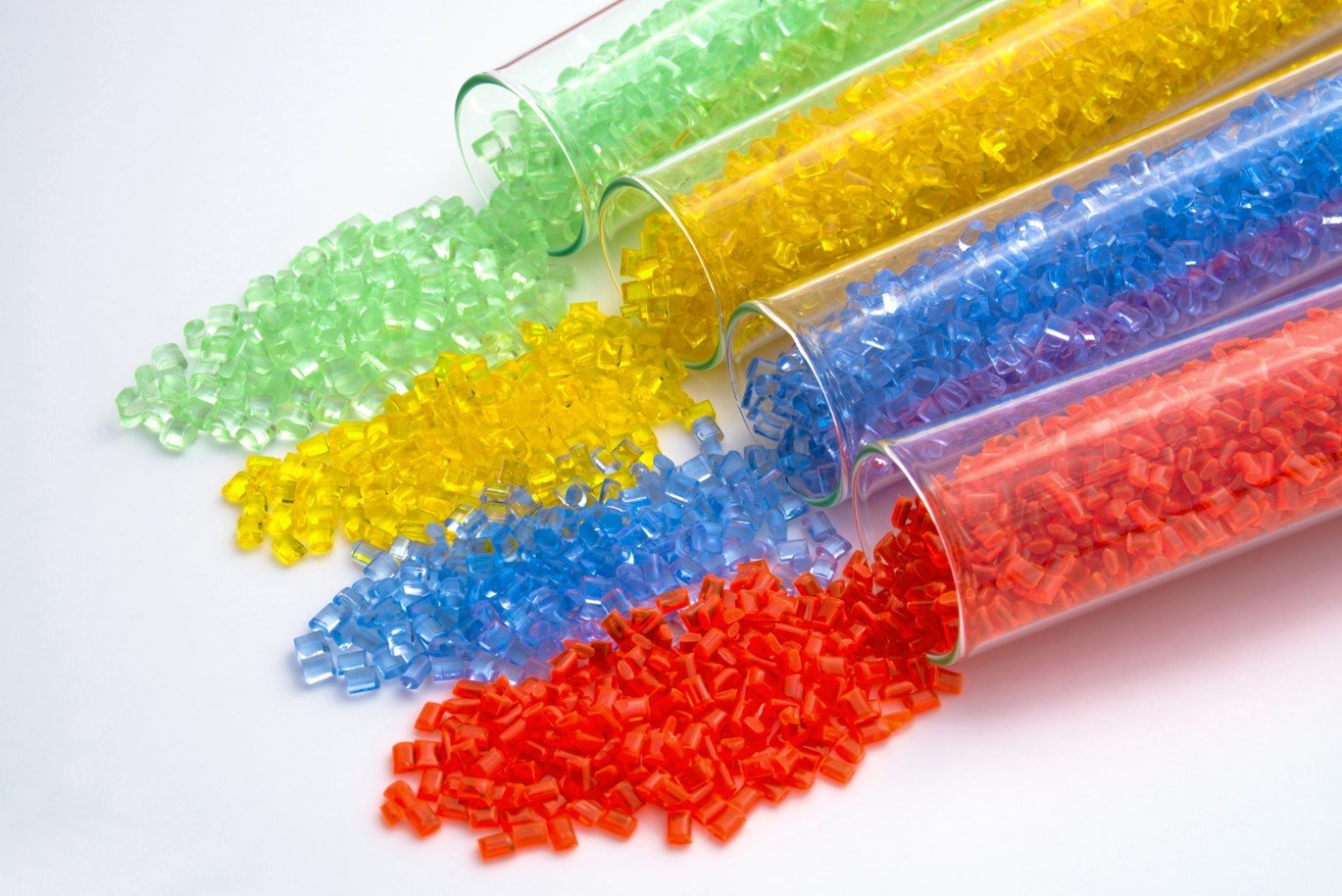 “Obtaining and Characterization of New Materials, Volume II” Edited by Dr. Andrei Victor Sandu Views: 26,119 + | Cited by 90+ |
 “Study on the Development and Applications of Magnesium Alloys” Edited by Prof. Dr. Chao Xu and Dr. Jing Zuo Views: 19,647 + | Cited by 80+ |
 “Shape Memory Alloys for Civil Engineering” Edited by Dr. Cheng Fang, Prof. Dr. Canxing Qiu and Dr. Yue Zheng Views: 23,817 + | Cited by 70+ |
 “Feature Collection on Porous Materials” Edited by Dr. Miguel Jorge and Dr. Moises Luzia Pinto Views: 20,855 + | Cited by 60+ |
You are welcome to view all of the Special Issues (https://www.mdpi.com/journal/materials/special_issues) and submit relevant papers to Materials. If you have any questions, you can contact the Editorial Office at materials@mdpi.com.
Materials Editorial Office
30 November 2023
MDPI Insights: The CEO's Letter #6 - MDPI Spain Summit and ResearchGate

Welcome to the MDPI Insights: The CEO's Letter.
In these monthly letters, I will showcase two key aspects of our work at MDPI: our commitment to empowering researchers and our determination to facilitating open scientific exchange.
Opening Thoughts

MDPI Spain Summit
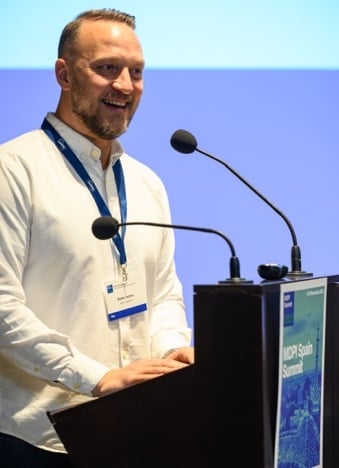
Stefan Tochev (CEO, MDPI) gives the opening speech at the MDPI Spain Summit.
On Friday 10 November 2023 I was in Barcelona, Spain, to deliver the opening presentation and participate in a panel at MDPI’s Spain Summit, a two-day event, inspired by our salon events in China.
With 16 Editors-in-Chief (EiCs) and 20 Editorial Board Members (EBMs) in attendance, the event, organized by our conference team and Barcelona office, featured presentations on open access (OA), MDPI, and publishing market trends in Spain.
The event provided a great opportunity to engage with stakeholders from various MDPI journals, including Nutrients, Vaccines, Buildings, IJMS, and others. We were able to gather feedback and have open conversations around manuscript quality, the peer-review process, and journal development, as well as accreditation agencies.
The main objective of this Summit was to bring together Editors representing MDPI journals across various disciplines within Spanish universities and research centers, primarily from the Barcelona area. The aim was to facilitate an open and fruitful discussion regarding the development of their journals, the future of OA in Spain, and to provide meaningful interactions and networking opportunities.
Connecting with Editorial Board Members

Stefan Tochev in conversation with Summit participants: "Our EBMs are passionate about the journals they serve."
Interacting with our EBMs in person provides a valuable opportunity to show how important it is to us to connect with them, hear their perspectives on their journals and learn more about their own experience collaborating with MDPI.
From my conversations, it was clear that our EBMs are passionate about the journals they serve. I know the advice they provide may sometimes involve just small tweaks, but these can lead to important improvements. As the saying goes, small hinges swing open big doors.
As at November 2023, MDPI has over 6,300 EBMs affiliated with Spanish institutions, with more than 30 of them serving as EiCs or section EiCs. Furthermore, over 68,000 Spanish scholars have contributed as reviewers in MDPI journals.
Open Access in Spain
In 2023, Spain implemented legislation mandating immediate OA for all publicly funded research, aligning with the EU’s Plan S initiative to expedite the transition to OA. The Spanish government also approved a four-year, €23.8 million annual budget for the first national OA strategy, aiming to make publicly funded research freely accessible upon publication. This strategy aims to strengthen the quality and transparency of research in Spain, and to help promote movement towards a digital, low-carbon economy.
For further details of Spain's OA policy and the history of government mandates, click here.
Spain has already seen a notable decline in subscription-only articles, decreasing by 62% over a 10-year period, while gold OA increased by 42%. Green OA slightly decreased, suggesting a shift towards publishing in gold OA journals rather than traditional subscription-based ones. Here are some statistics from Scopus.
A big thank-you to the various MDPI teams, including our conference team and the Barcelona office, for organizing this very successful event!
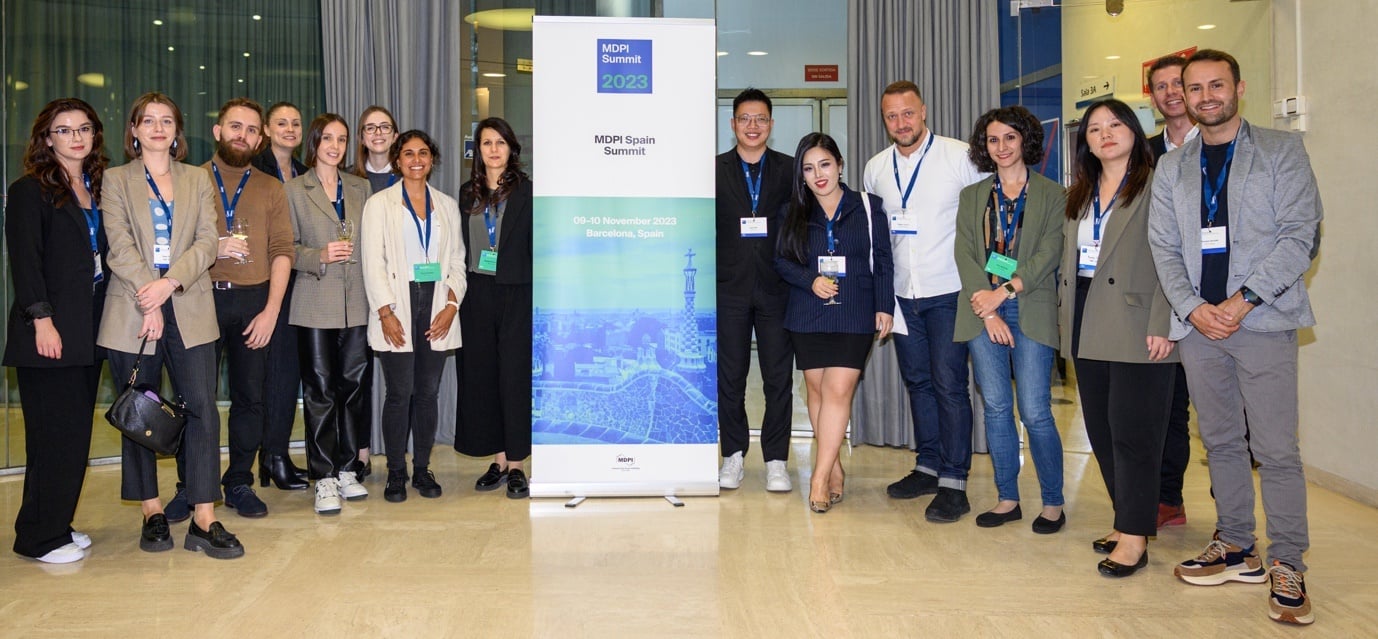
MDPI colleagues from various offices gathered to host and support the first MDPI Spain Summit, in Barcelona, Spain.
I think this type of gathering has the potential to become an annual event in various locations. For example, Manchester could be an option, as we have over 30 EiCs and over 3,000 EBMs in the UK, a top market for MDPI that publishes high-quality research.
Impactful Research

769 Editorial Board Members of MDPI Journals Recognized as Highly Cited Researchers in 2023
Congratulations to our 769 Editorial Board Members from 40 countries/territories who have been awarded Highly Cited Researcher status for 2023 by Clarivate. This recognition is based on their outstanding scientific research contributions and significant influence in various fields, as evidenced by Web of Science data.
Click here to view the full list of 769 Editorial Board Members.
Clarivate's Highly Cited ResearchersTM list identifies individuals with exceptional impact in scientific and social science domains over the past decade. Their papers rank in the top 1% of citations in 21 fields analysed in ‘Essential Science Indicators,’ showcasing their substantial influence.
This year, 7,125 Highly Cited Researcher 2023 designations were issued to 6,849 individuals from 67 countries, representing just 1 in 1,000 researchers worldwide.
These researchers demonstrate exceptional influence, representing a small fraction of contributors pushing the boundaries of knowledge, contributing to global well-being, sustainability, and security.
Congratulations to these scholars for their remarkable achievement: we are honoured to have them on board with our journals!
Inside MDPI

Corporate Marketing and Communications Strategy Session

Members of MDPI’s Corporate Marketing & Communications team.
For the past few years, I have led the Corporate Marketing & Communications department in our annual strategy session.
This typically involves 2–3 days of focused sessions covering key topics including budgeting, hiring targets, campaign reviews, and planning for the upcoming year, department strategy, and structure.
We are constantly exploring ways to optimize the Corporate Marketing & Communications department to support MDPI’s primary objectives and better convey the MDPI story while serving the scholarly community.
The strategy session also serves as a team-building activity, during which the team voted on bowling!
Strategy Session
In this strategy session, we looked at how to align our teams in order to better streamline our content with our campaigns, build a dedicated marketing team to strategically support our core MDPI products, expand our communications teams and functionalities to focus on company-critical campaigns and press releases, align our new brand design system with our marketing initiatives, set up a community and engagement team to support various teams with their outreach and communication efforts, and increase our use of data in the evaluation of campaign performance.
To grow in these areas, we will be hiring for various positions, including those of Public Relations Manager, Communications Manager, Internal Communications Manager, Campaign Manager, Marketing Associate, and Editorial Engagement Manager.
I am grateful for the way our Corporate Marketing & Communications department has grown and gelled over the years, and I look forward to supporting the department teams and their ideas for the future.
Coming Together for Science

ResearchGate and MDPI Partner to Boost the Visibility of Open Access Content through Journal Home
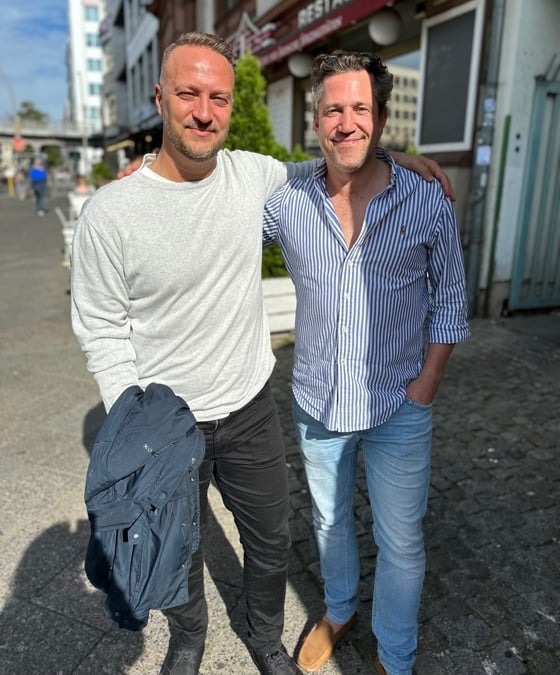
Stefan Tochev (CEO, MDPI) and Sören Hofmayer (Co-Founder and Chief Strategy Officer, ResearchGate) meet in Berlin, Germany to take their ongoing discussion further.
When I assumed the role of CEO at MDPI, my primary focus was to initiate the building of essential partnerships and collaborations within our industry. After all, I am a firm believer in achieving our goals by helping others achieve theirs and focusing on co-opetition wherever there is an opportunity. I first touched on the notion of co-opetition in MDPI Insights: The CEO's Letter #3, particularly when discussing collaborations with Elsevier.
In light of this, Sören Hofmayer (Co-Founder and Chief Strategy Officer at ResearchGate) and I connected recently to continue a discussion that had been ongoing for months. I was quickly brought up to speed and felt there was an opportunity for MDPI journals to pilot the Journal Home service that ResearchGate had launched. This would provide a new way for MDPI to engage with authors and readers and amplify the visibility of our journals.
While I receive many offers and opportunities for discussions with vendors, I am a firm believer that timing is everything, and in this case, the time for us is now. Sören and I met in person during my recent visit to Berlin and decided to proceed with piloting ten MDPI journals with the Journal Home service.
The press release below provides further details.
Press Release: Berlin (Germany) and Basel (Switzerland), 15 November 2023
ResearchGate, the professional network for researchers, and MDPI, the largest open access publisher in the world and a pioneer in open access publishing, today announced a partnership that will see ten of MDPI’s open access journals benefit from an enhanced presence on ResearchGate through its innovative Journal Home offering.
This new partnership will expand the reach and visibility of MDPI’s participating flagship journals with ResearchGate’s highly relevant community of more than 25 million researchers globally.
Around 210,000 version-of-record articles from these 10 titles will be readily available on ResearchGate, including the full archive material and all new articles as they are published. These journals also benefit from enhanced brand visibility, with dedicated journal profiles, prominent representation on all associated article pages and all relevant touchpoints across the ResearchGate network – keeping the journals top-of-mind with their reader and author audiences. All articles covered by the new partnership will automatically be added to the authors’ publication records in ResearchGate. This not only reduces MDPI authors’ needs for direct management but also offers them valuable insights into the impact of their work, including data about readership and citations.
Closing Thoughts

November is Men’s Health Awareness Month
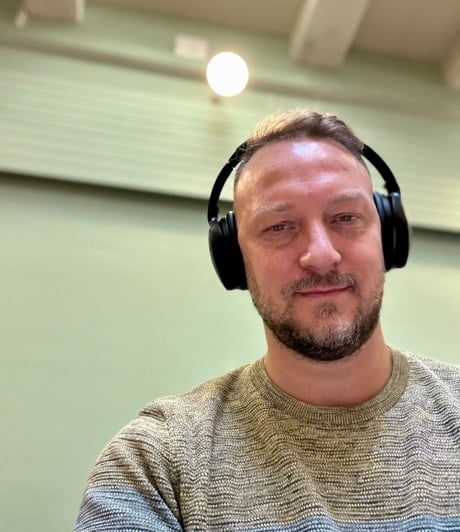
Stefan Tochev (CEO, MDPI) listening to music as he writes at a coffee shop in Basel, Switzerland.
November is dedicated to raising awareness of various men’s health issues. I have been fortunate to have positive male role models in my life, and I strive to share my experiences with others.
I used to take part in Movember, growing my moustache throughout November to raise awareness and funds and to help “change the face of men’s health.” With male family and friends impacted by physical and mental health issues, I have recently become more interested in men’s overall well-being.
Men often face stigma involving the perceived need always to be strong and have things figured out. Recently, I’ve had meaningful conversations with male friends and colleagues about issues we rarely discuss, and it was a positive experience.
Various factors impact men’s health and well-being, all too easily leading to risky health behaviours including a lack of health awareness, poor health education, and negative, culturally induced, behaviour patterns in our work and personal lives. I hope we can break down these barriers in our work environment.
Healthy men help build healthy families and a healthy society
Men are less likely than women to seek help with their physical and mental health struggles. This is a reminder to prioritize your overall well-being. I hope that as men, we will continue to open up to one another, becoming vulnerable in order to share what we are going through. By sharing and by supporting each other, we can learn and grow together. You are not alone, and when you fall, you can still get up and stand tall.
From one broski to another, you are loved and appreciated. I hope this mindset carries into December and beyond.
Mindfulness
Our content team recently released a handful of articles on mindfulness, a practice that I believe provides a good opportunity for stress release and self-reflection:
Chief Executive Officer
MDPI AG
24 November 2023
Materials | Top 10 Cited Papers in 2022 in the Section “Biomaterials”

We are pleased to invite you to read the top 10 cited papers from 2022 in Materials (ISSN: 1996-1944) in the Section “Biomaterials”. The paper list is as follows:
1. “Hemp Fibre Properties and Processing Target Textile: A Review”
by Malgorzata Zimniewska
Materials 2022, 15(5), 1901; https://doi.org/10.3390/ma15051901
Available online: https://www.mdpi.com/1996-1944/15/5/1901
2. “Synthesis and Potential Applications of Lipid Nanoparticles in Medicine”
by Ewelina Musielak, Agnieszka Feliczak-Guzik and Izabela Nowak
Materials 2022, 15(2), 682; https://doi.org/10.3390/ma15020682
Available online: https://www.mdpi.com/1996-1944/15/2/682
3. “Effects of Composite Attachments on Orthodontic Clear Aligners Therapy: A Systematic Review”
by Riccardo Nucera, Carolina Dolci, Angela Mirea Bellocchio, Stefania Costa, Serena Barbera, Lorenzo Rustico, Marco Farronato, Angela Militi and Marco Portelli
Materials 2022, 15(2), 533; https://doi.org/10.3390/ma15020533
Available online: https://www.mdpi.com/1996-1944/15/2/533
4. “A Review on Biomaterials for Orthopaedic Surgery and Traumatology: From Past to Present”
by Grzegorz Szczęsny, Mateusz Kopec, Denis J. Politis, Zbigniew L. Kowalewski, Adam Łazarski and Tomasz Szolc
Materials 2022, 15(10), 3622; https://doi.org/10.3390/ma15103622
Available online: https://www.mdpi.com/1996-1944/15/10/3622
5. “Bacterial Cellulose—A Remarkable Polymer as a Source for Biomaterials Tailoring”
by Lăcrămioara Popa, Mihaela Violeta Ghica, Elena-Emilia Tudoroiu, Diana-Georgiana Ionescu and Cristina-Elena Dinu-Pîrvu
Materials 2022, 15(3), 1054; https://doi.org/10.3390/ma15031054
Available online: https://www.mdpi.com/1996-1944/15/3/1054
6. “Peptide-Based Hydrogels: New Materials for Biosensing and Biomedical Applications”
by Roya Binaymotlagh, Laura Chronopoulou, Farid Hajareh Haghighi, Ilaria Fratoddi and Cleofe Palocci
Materials 2022, 15(17), 5871; https://doi.org/10.3390/ma15175871
Available online: https://www.mdpi.com/1996-1944/15/17/5871
7. “Hydroxyapatite Coating on Ti-6Al-7Nb Alloy by Plasma Electrolytic Oxidation in Salt-Based Electrolyte”
by Avital Schwartz, Alexey Kossenko, Michael Zinigrad, Yosef Gofer, Konstantin Borodianskiy and Alexander Sobolev
Materials 2022, 15(20), 7374; https://doi.org/10.3390/ma15207374
Available online: https://www.mdpi.com/1996-1944/15/20/7374
8. “Titanium Surface Modification for Implantable Medical Devices with Anti-Bacterial Adhesion Properties”
by Consuelo Celesti, Teresa Gervasi, Nicola Cicero, Salvatore Vincenzo Giofrè, Claudia Espro, Elpida Piperopoulos, Bartolo Gabriele, Raffaella Mancuso, Giovanna Lo Vecchio and Daniela Iannazzo
Materials 2022, 15(9), 3283; https://doi.org/10.3390/ma15093283
Available online: https://www.mdpi.com/1996-1944/15/9/3283
9. “Fungi in Mycelium-Based Composites: Usage and Recommendations”
by Maciej Sydor, Grzegorz Cofta, Beata Doczekalska and Agata Bonenberg
Materials 2022, 15(18), 6283; https://doi.org/10.3390/ma15186283
Available online: https://www.mdpi.com/1996-1944/15/18/6283
by Danijela Marovic, Matej Par, Matea Macan, Nikolina Klarić, Iva Plazonić and Zrinka Tarle
Materials 2022, 15(3), 902; https://doi.org/10.3390/ma15030902
Available online: https://www.mdpi.com/1996-1944/15/3/902
24 November 2023
Materials | Top 10 Cited Papers in 2022 in the Section “Polymeric Materials”

We are pleased to invite you to read the top 10 cited papers from 2022 in Materials (ISSN: 1996-1944) in the Section “Polymeric Materials”. The paper list is as follows:
1. “Environmental Impact of Surgical Masks Consumption in Italy Due to COVID-19 Pandemic”
by Antonella Cornelio, Alessandra Zanoletti, Stefania Federici, Luca Ciacci, Laura Eleonora Depero and Elza Bontempi
Materials 2022, 15(6), 2046; https://doi.org/10.3390/ma15062046
Available online: https://www.mdpi.com/1996-1944/15/6/2046
2. “Joule-Heating Effect of Thin Films with Carbon-Based Nanomaterials”
by Usha Kiran Sanivada, Dina Esteves, Luisa M. Arruda, Carla A. Silva, Inês P. Moreira and Raul Fangueiro
Materials 2022, 15(12), 4323; https://doi.org/10.3390/ma15124323
Available online: https://www.mdpi.com/1996-1944/15/12/4323
3. “A Novel Manufacturing Concept of LCP Fiber-Reinforced GPET-Based Sandwich Structures with an FDM 3D-Printed Core”
by Jacek Andrzejewski, Marcin Gronikowski and Joanna Aniśko
Materials 2022, 15(15), 5405; https://doi.org/10.3390/ma15155405
Available online: https://www.mdpi.com/1996-1944/15/15/5405
4. “The Use of Nanoscale Montmorillonite (MMT) as Reinforcement for Polylactide Acid (PLA) Prepared by Fused Deposition Modeling (FDM)—Comparative Study with Biocarbon and Talc Fillers”
by Jacek Andrzejewski, Mateusz Markowski and Mateusz Barczewski
Materials 2022, 15(15), 5205; https://doi.org/10.3390/ma15155205
Available online: https://www.mdpi.com/1996-1944/15/15/5205
5. “Preparation and Properties of Thermoplastic Polyurethane Composites Filled with Powdered Buckwheat Husks”
by Marcin Włoch and Paulina Landowska
Materials 2022, 15(1), 356; https://doi.org/10.3390/ma15010356
Available online: https://www.mdpi.com/1996-1944/15/1/356
6. “Effect of Chitosan Deacetylation on Its Affinity to Type III Collagen: A Molecular Dynamics Study”
by Piotr Bełdowski, Maciej Przybyłek, Alina Sionkowska, Piotr Cysewski, Magdalena Gadomska, Katarzyna Musiał and Adam Gadomski
Materials 2022, 15(2), 463; https://doi.org/10.3390/ma15020463
Available online: https://www.mdpi.com/1996-1944/15/2/463
7. “Fracture Load Predictions in Additively Manufactured ABS U-Notched Specimens Using Average Strain Energy Density Criteria”
by Marcos Sánchez, Sergio Cicero, Sergio Arrieta and Victor Martínez
Materials 2022, 15(7), 2372; https://doi.org/10.3390/ma15072372
Available online: https://www.mdpi.com/1996-1944/15/7/2372
8. “Additively Manufactured Composite Lug with Continuous Carbon Fibre Steering Based on Finite Element Analysis”
by Chethan Savandaiah, Stefan Sieberer and Georg Steinbichler
Materials 2022, 15(5), 1820; https://doi.org/10.3390/ma15051820
Available online: https://www.mdpi.com/1996-1944/15/5/1820
9. “Complicated Structure Change during Capillary Extrusion of Binary Blends of Polycarbonate and Poly(methyl methacrylate)”
by Masayuki Yamaguchi, Kodai Nakamura, Takeyoshi Kimura, Nantina Moonprasith, Takumitsu Kida, Kyoko Tsubouchi, Takaaki Narita and Tatsuhiro Hiraoka
Materials 2022, 15(8), 2783; https://doi.org/10.3390/ma15082783
Available online: https://www.mdpi.com/1996-1944/15/8/2783
by Piia Jõul, Tran T. Ho, Urve Kallavus, Alar Konist, Kristiina Leiman, Olivia-Stella Salm, Maria Kulp, Mihkel Koel and Tiit Lukk
Materials 2022, 15(8), 2861; https://doi.org/10.3390/ma15082861
Available online: https://www.mdpi.com/1996-1944/15/8/2861
24 November 2023
Materials | Top 10 Cited Papers in 2022 in the Section “Energy Materials”

We are pleased to invite you to read the top 10 cited papers from 2022 in Materials (ISSN: 1996-1944) in the Section “Energy Materials”. The paper list is as follows:
1. “Photovoltaic Cell Generations and Current Research Directions for Their Development”
by Justyna Pastuszak and Paweł Węgierek
Materials 2022, 15(16), 5542; https://doi.org/10.3390/ma15165542
Available online: https://www.mdpi.com/1996-1944/15/16/5542
2. “Root Causes and Mechanisms of Failure of Wind Turbine Blades: Overview”
by Leon Mishnaevsky, Jr.
Materials 2022, 15(9), 2959; https://doi.org/10.3390/ma15092959
Available online: https://www.mdpi.com/1996-1944/15/9/2959
3. “Multi-Scale Modeling of Plastic Waste Gasification: Opportunities and Challenges”
by Sepehr Madanikashani, Laurien A. Vandewalle, Steven De Meester, Juray De Wilde and Kevin M. Van Geem
Materials 2022, 15(12), 4215; https://doi.org/10.3390/ma15124215
Available online: https://www.mdpi.com/1996-1944/15/12/4215
4. “Recent Advances on Thermoelectric Silicon for Low-Temperature Applications”
by Dario Narducci and Federico Giulio
Materials 2022, 15(3), 1214; https://doi.org/10.3390/ma15031214
Available online: https://www.mdpi.com/1996-1944/15/3/1214
5. “Hydrogen Generation by Hydrolysis of MgH2-LiH Composite”
by Xiaojuan Wu, Huaqing Xue, Yong Peng, Jifeng Deng, Zewei Xie, Jie Zheng, Xingguo Li and Shuan Li
Materials 2022, 15(4), 1593; https://doi.org/10.3390/ma15041593
Available online: https://www.mdpi.com/1996-1944/15/4/1593
6. “Smart Materials Prediction: Applying Machine Learning to Lithium Solid-State Electrolyte”
by Qianyu Hu, Kunfeng Chen, Fei Liu, Mengying Zhao, Feng Liang and Dongfeng Xue
Materials 2022, 15(3), 1157; https://doi.org/10.3390/ma15031157
Available online: https://www.mdpi.com/1996-1944/15/3/1157
7. “Towards Replacing Titanium with Copper in the Bipolar Plates for Proton Exchange Membrane Water Electrolysis”
by Andrea Kellenberger, Nicolae Vaszilcsin, Delia Duca, Mircea Laurentiu Dan, Narcis Duteanu, Svenja Stiber, Tobias Morawietz, Indro Biswas, Syed Asif Ansar, Pawel Gazdzicki et al.
Materials 2022, 15(5), 1628; https://doi.org/10.3390/ma15051628
Available online: https://www.mdpi.com/1996-1944/15/5/1628
8. “Complex Metal Borohydrides: From Laboratory Oddities to Prime Candidates in Energy Storage Applications”
by Cezar Comanescu
Materials 2022, 15(6), 2286; https://doi.org/10.3390/ma15062286
Available online: https://www.mdpi.com/1996-1944/15/6/2286
9. “Evolution of Intrinsic and Extrinsic Electron Traps at Grain Boundary during Sintering ZnO Based Varistor Ceramics”
by Pengkang Xie, Ziyue Wang and Kangning Wu
Materials 2022, 15(3), 1098; https://doi.org/10.3390/ma15031098
Available online: https://www.mdpi.com/1996-1944/15/3/1098
10. “Analysis of the Embodied Energy and CO2 Emissions of Ready-Mixed Concrete: A Case Study in Cuenca, Ecuador”
by Karla Vázquez-Calle, Vanessa Guillén-Mena and Felipe Quesada-Molina
Materials 2022, 15(14), 4896; https://doi.org/10.3390/ma15144896
Available online: https://www.mdpi.com/1996-1944/15/14/4896
21 November 2023
769 Editorial Board Members of MDPI Journals Achieve Highly Cited Researcher Recognition in 2023

We extend our sincere congratulations to the 769 Editorial Board Members of our journals – from 40 different countries/territories – who have been recognized as Highly Cited Researchers for the year 2023 by Clarivate. They are being recognized for their high-quality scientific research achievements and outstanding contributions to their professional fields, as indicated by Web of Science data.
Clarivate's annual list of Highly Cited ResearchersTM identifies the most highly cited scientists for the past decade who stand out for their significant and broad influence in various scientific and social science domains. Their impactful papers are among the top 1 per cent in the citation distribution of one or more of 21 fields analyzed in the "Essential Science Indicators", distinguishing them as hugely influential among their peers.
This year, 7,125 Highly Cited Researcher 2023 designations were issued to 6,849 individuals from 67 countries, representing just 1 in 1,000 researchers worldwide.
This means that these researchers have demonstrated an incredible level of significant and broad influence in their chosen field or fields over the last decade. They represent a small fraction of the researcher population whose contributions disproportionately push the boundaries of knowledge, enhancing global well-being, sustainability, and security.
Congratulations to the scholars for their noteworthy achievement – we are honored to have them on board with our journals!
|
Abate, Antonio |
Jaiswal, Amit K. |
Shen, Zexiang |
17 November 2023
Materials | Top 10 Cited Papers in 2022 in the Section “Advanced Nanomaterials and Nanotechnology”

We are pleased to invite you to read the top 10 cited papers in 2022 in Materials (ISSN: 1996-1944) in the Section “Advanced Nanomaterials and Nanotechnology”. The paper list is as follows:
1. “Treasure on the Earth—Gold Nanoparticles and Their Biomedical Applications”
by Justyna Milan, Klaudia Niemczyk and Małgorzata Kus-Liśkiewicz
Materials 2022, 15(9), 3355; https://doi.org/10.3390/ma15093355
Available online: https://www.mdpi.com/1996-1944/15/9/3355
2. “Preparation and Characterization of Doxycycline-Loaded Electrospun PLA/HAP Nanofibers as a Drug Delivery System”
by Noémi-Izabella Farkas, Laura Marincaș, Réka Barabás, Liliana Bizo, Aranka Ilea, Graziella Liana Turdean, Monica Toșa, Oana Cadar and Lucian Barbu-Tudoran
Materials 2022, 15(6), 2105; https://doi.org/10.3390/ma15062105
Available online: https://www.mdpi.com/1996-1944/15/6/2105
3. “Lubricity and Rheological Properties of Highly Dispersed Graphite in Clay-Water-Based Drilling Fluids”
by Quande Wang, Michal Slaný, Xuefan Gu, Zhipeng Miao, Weichao Du, Jie Zhang and Chen Gang
Materials 2022, 15(3), 1083; https://doi.org/10.3390/ma15031083
Available online: https://www.mdpi.com/1996-1944/15/3/1083
4. “Green Synthesis of Stable Spherical Monodisperse Silver Nanoparticles Using a Cell-Free Extract of Trichoderma reesei”
by Orlin Gemishev, Marinela Panayotova, Gospodinka Gicheva and Neli Mintcheva
Materials 2022, 15(2), 481; https://doi.org/10.3390/ma15020481
Available online: https://www.mdpi.com/1996-1944/15/2/481
5. “A Brief Review: The Use of L-Ascorbic Acid as a Green Reducing Agent of Graphene Oxide”
by Mariano Palomba, Gianfranco Carotenuto and Angela Longo
Materials 2022, 15(18), 6456; https://doi.org/10.3390/ma15186456
Available online: https://www.mdpi.com/1996-1944/15/18/6456
6. “Carbon Nanomaterials (CNMs) and Enzymes: From Nanozymes to CNM-Enzyme Conjugates and Biodegradation”
by Petr Rozhin, Jada Abdel Monem Gamal, Silvia Giordani and Silvia Marchesan
Materials 2022, 15(3), 1037; https://doi.org/10.3390/ma15031037
Available online: https://www.mdpi.com/1996-1944/15/3/1037
7. “Comparison of Pressure Sensing Properties of Carbon Nanotubes and Carbon Black Polymer Composites”
by Jongchan Yoo, Dong-Young Kim, Hyunwoo Kim, Oh-Nyoung Hur and Sung-Hoon Park
Materials 2022, 15(3), 1213; https://doi.org/10.3390/ma15031213
Available online: https://www.mdpi.com/1996-1944/15/3/1213
8. “The In Situ Hydrothermal and Microwave Syntheses of Zinc Oxides for Functional Cement Composites”
by Izabela Klapiszewska, Adam Kubiak, Anna Parus, Marcin Janczarek and Agnieszka Ślosarczyk
Materials 2022, 15(3), 1069; https://doi.org/10.3390/ma15031069
Available online: https://www.mdpi.com/1996-1944/15/3/1069
9. “Assessment of TiO2 Nanoparticle Impact on Surface Morphology of Chinese Hamster Ovary Cells”
by Danute Batiuskaite, Ingrida Bruzaite, Valentinas Snitka and Arunas Ramanavicius
Materials 2022, 15(13), 4570; https://doi.org/10.3390/ma15134570
Available online: https://www.mdpi.com/1996-1944/15/13/4570
10. “Recent Progress on Graphene Flexible Photodetectors”
by Mengzhu Wang, Yingying Xiao, Ye Li, Lu Han, Zhicheng Sun, Liang He, Ruping Liu and Kuan Hu
Materials 2022, 15(14), 4820; https://doi.org/10.3390/ma15144820
Available online: https://www.mdpi.com/1996-1944/15/14/4820




